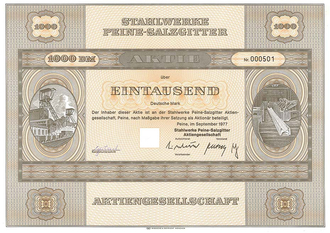Difficult decades

Stahlwerke Peine-Salzgitter AG enjoyed a promising start to the 1970s as production, sales and profits all initially increased. However, within a matter of years the world found itself in the grip of a steel crisis that was to last, with varying intensity, for two decades. There followed a series of restructuring and modernization measures that were urgently necessary to safeguard the performance and, with it, the survival of Stahlwerke Peine-Salzgitter AG.
With production concentrated on the most efficient plants and the lion’s share of expansion focused on Salzgitter and Peine, the original plant in Ilsede declined in importance. Pig iron production ceased in 1983; in 1995, with the shutdown of the power station, coking plant and remaining auxiliary units, the plant was finally abandoned. The company also steadily reduced its ore mining operation in favor of more economical ores sourced from abroad. Following the closure of the Lengede mine in 1977, the company’s own production as a proportion of ore supplies for the first time slipped below 10%. And with the closure of the Haverlahwiese mine in 1982, ore extraction finally ceased entirely.
The year 1989 marked a watershed in the company’s history during these difficult times. The German government privatized Salzgitter AG and thus also its subsidiary Stahlwerke Peine-Salzgitter AG with the sale of the business to Preussag AG, based in Lower Saxony.
In the years that followed, the former Salzgitter Group was absorbed within Preussag AG, and in 1999 Stahlwerke Peine-Salzgitter AG was renamed Preussag Stahl AG.






